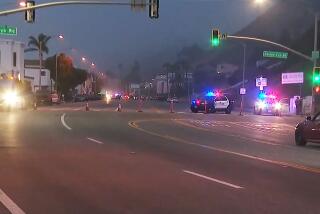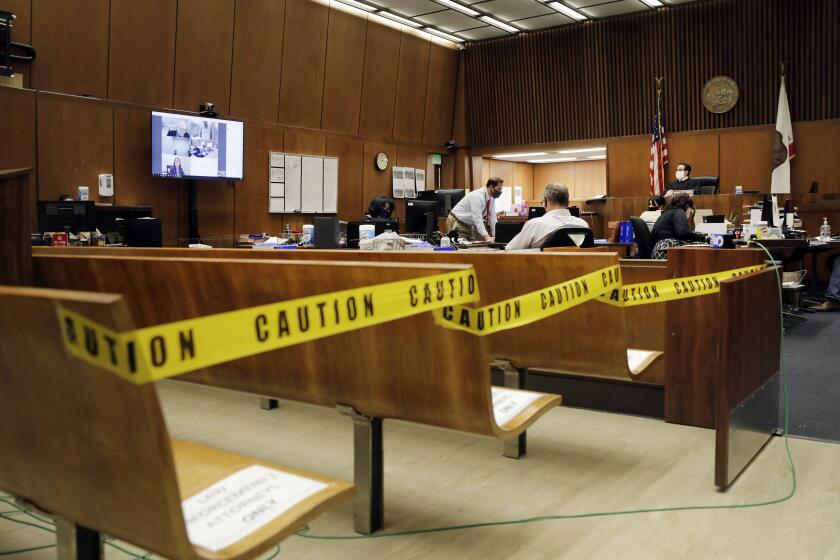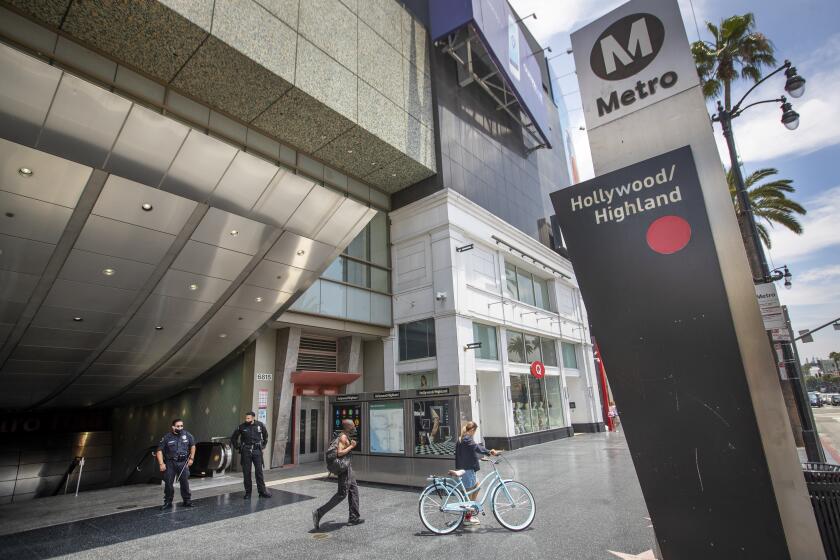EPA erred in figuring Cerritos’ cancer risk
The city of Cerritos is used to raking in awards and distinctions. Named an All-America City in 2008 and a Tree City USA for 11 consecutive years, Cerritos bills itself as an oasis in an urban desert. A fountain adjacent to City Hall belches up clean, chlorinated water to the delight of area children, who romp in their bathing suits in the sun reflected off the city’s award-winning, titanium-clad library.
But Cerritos was tagged with a more noxious distinction two weeks ago, when the federal Environmental Protection Agency declared it the city with the highest cancer risk in the country -- more than 33 times the national average. News crews descended, e-mail from alarmed residents flooded in, and city officials were forced to answer hard questions at a town hall meeting.
When he heard the news, Mayor Bruce W. Barrows said, his first thought was: “It had to be a mistake.”
Two weeks later, it looks like the mayor was right.
The EPA said its data on the Heraeus Metal Processing plant, which it said was spewing about 1,250 pounds of the cancer-causing chemical hydrazine, was from 1989.
Twenty years later, Heraeus is emitting less than two pounds of hydrazine per year, according to air monitoring data released Thursday by the South Coast Air Quality Management District.
That pushed the lifetime cancer risk from hydrazine exposure to about 1 in 2 million. The EPA had calculated the area’s cancer risk at about 1,200 in 1 million, largely due to hydrazine exposure.
An AQMD study released last year found the cancer risk for all of Southern California was about 1,200 in 1 million, predominantly from diesel exhaust.
Local investigators also found that the EPA had placed Heraeus in a Cerritos census tract, when it is actually in the adjacent city of Santa Fe Springs.
“It’s really unfortunate that this wasn’t caught before this community was named the toxic hot spot of the nation,” said Barry R. Wallerstein, executive officer at the South Coast AQMD.
The AQMD also found that the EPA had relied on data from long-closed facilities in its ranking of at least four high-risk areas in the region.
The EPA defended the study, saying that it got its data from a 2002 national emissions inventory that used data from the state.
Why the inventory may have had 20-year-old data, and whether the facility even was emitting 1,250 pounds of hydrazine in 1989, remain a mystery.
“At some point in time, some professional made the engineering judgment that the facility was emitting that level,” said Matthew Lakin, air quality analysis office manager for the Pacific Southwest EPA.
The EPA admits that its computer modeling and data, which it says are used to identify pollution hot spots and to look at trends, are less accurate than the AQMD’s air monitoring numbers.
“The South Coast Air Quality Management District has taken swift strides to protect the public’s health,” said Deborah Jordan, air division director of the EPA’s Pacific Southwest region. “Because of their prompt response, there is now information on current, actual hydrazine levels at the facility and in the community.”
Meanwhile, the Cerritos Council is trying to repair the damage to the city’s reputation -- and its budget. The city has set aside as much as $250,000 to cover legal fees, staff time, and an estimated $70,000 spent on hiring a private consultant to analyze the data.
The mayor remains concerned with attracting business and maintaining property values in a city known for its sprawling auto malls and retail centers.
The median value for a single-family home in Cerritos was $600,000 in May 2009.
“People pay a lot of money to live here because it’s such a clean city, and the education levels are high,” Barrows said. “We’ve had some major damage done to us by what I’m going to refer to as probably the most irresponsible press that I’ve read.”
--
More to Read
Start your day right
Sign up for Essential California for news, features and recommendations from the L.A. Times and beyond in your inbox six days a week.
You may occasionally receive promotional content from the Los Angeles Times.






